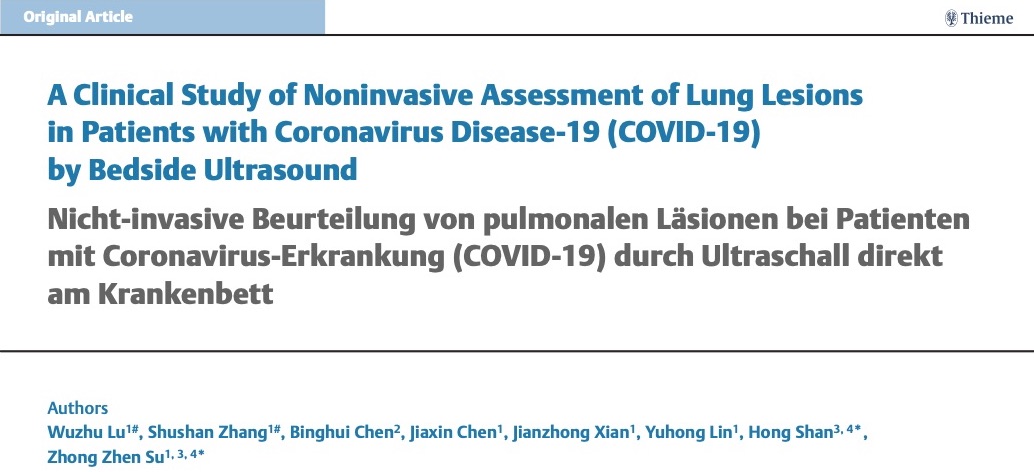Lung US was compared to CT which was used as the reference standard
#POCUSforCOVID
thieme-connect.de/products/ejour…
1/

-6 region scan per hemithorax (anterior, lateral, posterior divided into upper and lower regions)
-scanning in BOTH longitudinal and transverse
-used BOTH convex and linear probes
-5-8 min per scan
2/
0 pt: normal pleural line, A lines, <3 B lines
1 pt: >3 B lines
2 pt: coalescent B lines
3 pt: consolidation
Total score summed up (0-36 pt):
-none: 0 pt
-mild: 1-7 pt
-moderate: 8-18 pt
-severe: 19+ pt
3/
-none: 0%
-mild: 5-30%
-moderate: 31-50%
-severe: 51+%
4/
Unfortunately, the authors never analyze the relationship between imaging findings and clinical severity
5/
-27 of 30 pts had lung US findings: all had B-lines
-6 had consolidation
-3 had pleural thickening
-only 1 had a small pleural effusion
-22 with bilateral involvement
-lower lobes and posterior regions more commonly involved
6/
Unfortunately, this isn't a true diagnostic test assessment of US for COVID, as all included pts were known to have COVID based on PCR testing
We still don't know what the "definition" of a positive lung US for COVID is
8/
-There is moderate agreement between lung US and chest CT findings - one of the issues with US was visualizing apical abnormalities
-10% of pts had normal lung US
-All pts with lung US findings had B lines, most abnormalities were found posteriorly and inferiorly
9/
-Best scanning protocol
-Learning curve and generalizability
-Actual test characteristics for COVID
-Definition of positive US
-Clinical significance of findings (severity, prognosis)
end/



